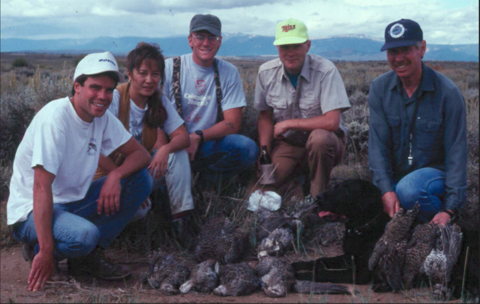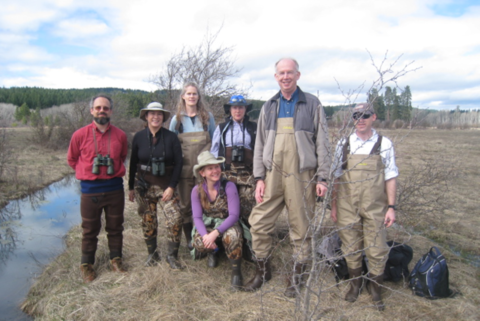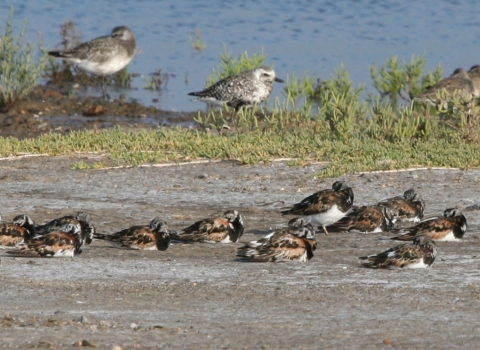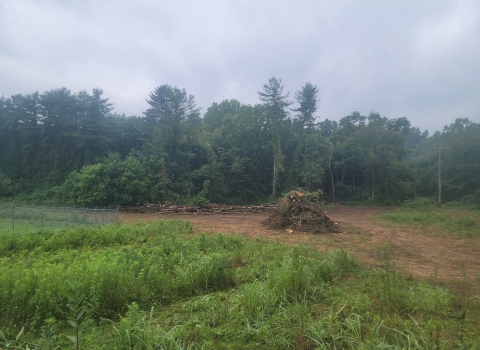The world of conservation is fueled by long hours and uphill battles, with the goal to leave the world in a better place for the next generation. To say it is a world fueled by passion would be cliché but remains 100% true for those who have devoted their entire careers to it. While the work may come with risk and sacrifice, friendships, experiences, and wisdom are its rewards.
Affectionately known as MAZ to those around her, Marilet Zablan dedicated nearly 40 years towards conservation and recently retired after 33 years with the U.S. Fish and Wildlife Service (Service).
Zablan began her career in conservation in the mid-1980s while pursuing her Bachelor of Science degree at Colorado State University. Working at the same time as a wildlife research assistant for the State of Colorado’s Parks and Wildlife upland birds program, Zablan worked on grouse population dynamics through graduate school.
In 1992, Zablan began her career with the Service as a senior vertebrate ecologist for the endangered species program in Salt Lake City, Utah. She worked there for almost seven years before deciding to take on new challenges with the Service. Zablan’s determination to achieve new goals took her to Honolulu as a supervisory biologist, and then to Portland, Oregon, as the (then-titled) Endangered Species Chief for the Pacific Region.
Throughout her distinguished career, Zablan has been instrumental in the protection of many endangered species, made many friends, mentored many junior biologists, and had many life-changing experiences. She stepped into her conservation role with a firm foundation in wildlife population dynamics and ecology, but now leaves her role as a fully constructed house of wisdom. Here’s excerpts from our interview with her.
Where did your career begin and what was it that triggered your passion into conservation?
Anyone under age 50 probably won’t know Marlin Perkins, but he had a Sunday night TV show called “Mutual of Omaha’s Wild Kingdom” that I watched religiously as a kid. I know he inspired so many of us. But his wasn’t the only influence for me.
I played outside every day; my friends and I explored my Upstate New York neighborhood and surrounding areas: vacant lots, ponds, forests, trails, and meadows. I knew that animals and vegetation changed with seasons, and started to become very curious about which places were important for which species. One day, I arrived to see that a huge brushy meadow here we had regularly poked around had been bulldozed. Leveled. Houses would be built there, and that was the end of the wildlife habitat that we had become so familiar with.
My mom liked to think that her dad also had an influence on me. He was a hobby-aviculturist who had such a passion for native birds that it was his goal to collect at least one pair of every species of bird from every province in the Philippines. I’m not sure if he was able to reach that goal, but when my mom took me there for a visit when I was 9 years old, I got to see his collection. Holy smokes! He had built a huge, tall, and wide, aviary that spanned the entire side of their house. I had never seen anything like it, not even in any zoo. I was surprised that someone in our family could be so focused on the birds like that. He opened my mind to the fact that nature provides peace for all of us, in different ways.
Did all the above play roles in my studying wildlife -- including undergraduate field studies on white-tailed ptarmigan and greater sage-grouse in graduate school -- and in my eventual first job working for the Service’s Utah Ecological Services (ES) office on habitat conservation plans? You bet! I was admitted to medical school but turned it down to continue studying wildlife… that’s how much of an influence all that was.
You were a senior vertebrate ecologist for the Endangered Species program in Salt Lake City. Tell us a bit about that role and what were the steps or the catalyst that made you feel it was time to advance your career within the Service?
Six years into my first federal wildlife job in the Service’s ES field office in Utah, I was working mostly in southern Utah on all things Endangered Species Act related to terrestrial vertebrates: desert tortoise, Utah prairie dog, Mexican spotted owl, southwestern willow flycatcher, and black-footed ferret, to name a few. We had an entry-level biologist join our office and although I wasn’t a supervisor, he was assigned to me. It was my first opportunity to mentor and we got so much done together. This started me thinking about whether my next move might be to manage a team. I began being open to the possibility of making a move.
The Pacific Islands Fish and Wildlife Office field supervisor at the time called me to offer a lateral to come on over – and I did! I told myself I’d give Hawaiʻi about five years, then figure out my next move. And a husband, a daughter, and 13 years later – ha -- I took my current position in the ES program in the Pacific Regional Office in Portland.
For folks who might be timid about applying for a new position I would advise that it’s not just about the position. Considering who you will work with and where (geographically) the job is located have been as-important factors to me in considering whether to make a move or not. I think of the job, the people, and the place as factors that should be like an equilateral triangle – each of the three sides is equal in value.
What are some of the greatest moments you’ve had in your career?
Translocation and capture of poʻo-uli: Although this native Hawaiian honeycreeper (bird) is now presumed extinct, I am proud of the fact that the Service and the State of Hawaiʻi, with our partners, worked together for years and did everything we could to try to save the poʻo-uli, a monotypic genus, Melamprosops phaeosoma, that was discovered/named in only 1973! I’m also proud that we established a cell line (in frozen storage at a zoo facility) in case of future genetic technology applications, and we did this over two decades ago, well before it was common practice.
Seeing my younger biologists flourishing: I supervised two interns who are flourishing in their conservation careers in California and Puerto Rico, and who have families of their own. I remember them when they were in school and were nervous and unsure of where life would take them. I also continue to be tickled at the thought of a current Pacific Region biologist who told me that, despite their excellent academic training and experience, they didn’t think they would be able to work as a career wildlife biologist. Yet, lo and behold, they are a biologist now, extremely valued in their office, and thankful that I didn’t agree with them that they should pursue a non-wildlife career. All three of these biologists are diverse and I am thrilled at the support the Service gives them.
Meeting my husband: I met my husband when he was a student in a National Conservation Training Center course on habitat conservation planning that I was teaching in Honolulu. I was working in Utah at the time, and if I hadn’t agreed to teach that course, we may never have met. I think the world of him -- and his conservation work, as well. We have two daughters, and we look forward to enjoying our retirements together, as he retired earlier this year after 37 years of federal service. Thank you to the Service and NCTC for bringing my husband and me together.
What advice would you pass on to those who aspire to having an efficacious career like yours?
Some advice I would give to early-career personnel would be to be open to new experiences – people are always looking for help in the form of detailees, for example. Sometimes those details or “other duties as assigned” will open your eyes to new possibilities, and certainly will introduce you to new Service personnel as well.
Another piece of advice: Cultivate a mentor-mentee relationship for yourself, with someone you look up to. I have done that over the years, sometimes not using those labels, but always reaching out to someone who I admire and trust for thorny questions/challenges I have needed to bounce off someone. They have also given me constructive feedback that I have taken to heart.
Final piece of advice for everyone, prioritize yourself. Take care of yourself so you are fit and rested and can readily take on your work. This means putting yourself and your family/loved ones first. So that the person you bring to the office is refreshed, balanced, and ready to take on the day. There is always more to do than we have time for – and it’s not all on you. If possible, always bring your sense of humor to work – there’s enough heaviness in what we do, especially in endangered species conservation work – we got to use all the tools we have to stay strong.







